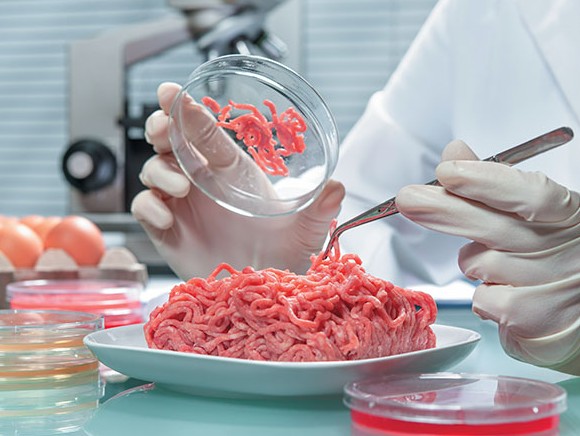
The use of additives in the manufacture of food and beverage products is a continuing source of tension: consumers want their products to contain as few additives as possible, manufacturers cannot simply leave them all out, and scientists are faced with determining the safety of alternatives. How should this situation be tackled?
For effective debate, you must be able to support your opinions with sound arguments or use counter-arguments to undermine your opponent’s standpoint. That requires knowledge on both sides, and the same holds true for E numbers. In the media, the ‘debate’ on E numbers is heating up. Generally, most consumer arguments are based on the ‘E’ for emotion. However, the average consumer has little to no knowledge about nutritional science and food technology, and nor can we expect them to, but a little more basic knowledge would be useful in helping them to make more conscious choices. To start with, most consumers have no idea what the term ‘E number’ stands for. They have become ‘F numbers’ based on the ‘F’ for fear.
In the 1960s and 1970s, the European Commission harmonised legislation on the use of additives in the European Union. It chose a system that would restrict the number of approved additives as much as possible (as a result, a system that would accept as many different substances as possible with comparable technological functions did not make the grade).
The selected option led to relatively high use of a limited number of substances. As a result of this decision, people have a higher chance of consuming more of the same additives. In order to determine the acceptable level of exposure to these substances, an Acceptable Daily Intake (ADI) concept was devised. In 1986 the EU significantly amended the food labelling laws. Whereas until then it had been sufficient to merely list the generic function of an additive, it was now necessary to also include its chemical name. Because all those names meant that the text would no longer fit on many existing labels, manufacturers were permitted to list the ‘E number’. An E number is nothing more than the code for a substance that is approved for use within the European Union (EU) as an additive in food and beverage products intended for human consumption.
As a marketing manager, how should you position your products? That too has changed over time. Even in the 1980s people were already paying a lot of attention to the nutritional aspects of food. Manufacturers primarily made products that were low in fat and sugar. Furthermore, they made a considerable effort to improve convenience for consumers. In the 1990s the focus shifted to the positive nutritional values: higher in fibre, vitamins or minerals. In the first decade of this century functional food moved into the spotlight: products that contribute to consumer health and well-being. And a logical extension of that is the current focus on fresh: less-processed and more additive-free food.

Although much scientific research has been conducted into additives and food safety, many of the results have not found their way to consumers, and nor have the publications by the European Union and the European Food Safety Authority contributed to boosting consumer knowledge. After all, who is going to read such a complex - and, for the average consumer, incomprehensible - report? But what consumers do read avidly is all the scaremongering on internet forums: the personal anecdotes about the horrific consequences of consuming products containing additives.
The best-known stories are about the use of monosodium glutamate (MSG/Ve-tsin)because that has caused people to become ill, faint or worse...and yet, carefully conducted scientific research (including by the University of Groningen) has never been able to prove any truth in these rumours. MSG occurs naturally in vegetables such as tomatoes or mushrooms and in many food products such as cheese. Glutamic acid is an amino acid that makes up protein and is essential to the human metabolism.
Another example is one off the list of Hopital de Villejuif (a list dating from the 1970s which provides an overview of life-endangering additives that should be avoided). The list names the most dangerous substance as being E330, citric acid. Once again, to this day it has not been scientifically proven that the intake of citric acid presents any kind of danger. This substance occurs naturally in citrus fruit (at 8% of the dry weight in lemons, for example).
Almost all food manufacturing companies are already working hard on eliminating or replacing one or more additives from the products in their range. For some products it has had little or no effect on the processing, shelf life or flavour, but in the case of other products the effect has been insurmountable.
The use of nitrite in the manufacture of meat products has been an issue in the organic meat sector for many years. Nitrite is a preservative that is added to prevent growth of the Clostridium botulinum bacteria to form toxins. It is added as ‘colouring salt’: salt containing 0.6% sodium nitrite. Using an alternative to colouring salt, such as nitrate-rich vegetable extract from celery, also results in nitrite in the meat product and after heating it offers protection against the unwanted growth of Clostridum botulinum. So many people will think: That’s good, isn’t it?
But there’s a downside. Various studies have shown that there are strong variations in the final concentration of nitrite in meat products treated in this way. This is caused by different levels in the natural content and the varying effect of conversions during processing. A further negative consequence is that, because no E number is added, nothing is declared on the label. And yet failure to declare nitrate that has been added as nitrate extract is an incorrect interpretation of the food additive regulation (EC 1333/2008). In another example, sodium glutamate can be replaced by using tomato or mushroom extract, since these extracts naturally contain sodium glutamate. In this case, there is no ‘need’ to list flavour enhancer MSG E621 on the label.

But is this what consumers want? After all, replacing E numbers in this way is at complete odds with the transparency that consumers are also demanding. One thing is for sure: there are countless opportunities for replacing the additives (that consumers regard as undesirable) with alternatives that perform a similar function. However, chemical research would still reveal an additive to be present in the product. There are plenty of critical bodies investigating this, so food companies are still at risk of damage to their reputation. As a food manufacturer, it is better to be open and transparent. List the essential additives but also explain to consumers, on your website for example, why you have made certain choices. Knowledge is power, but knowledge-sharing is strength.
Source: Foto vrouw: ©iStock.com/Franck-Boston, Foto knolselderij: ©Peter Zijlstra/Shutterstock.com, Foto gehakt: ©Alexander Raths/shutterstock.com